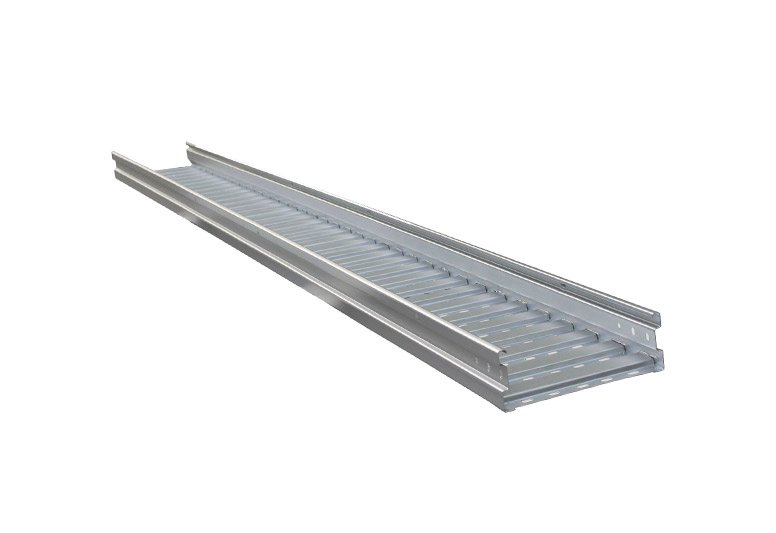Мост для лотков из нержавеющей стали
It is usually composed of a perforated bottom plate and side edges, or made by punching and bending a whole piece of sheet metal. It is generally a tray shaped structure, and some can be equipped with protective covers according to needs. This structure not only ensures the strength of the bridge frame, but also achieves good heat dissipation and ventilation functions.
Characteristic
Strong corrosion resistance: Made of stainless steel materials such as 304 and 316, it can resist the erosion of acids, alkalis, salts, humid air, and other corrosive media, and is suitable for harsh environments such as chemical, electroplating, and coastal areas.
High strength and stability: It has high tensile, compressive, and bending strength, a stable structure, can withstand large cable weights and external loads, is not easily deformed or damaged, and ensures the safe operation of cable lines.
Good fire resistance: Stainless steel material itself is non flammable and can maintain structural integrity at high temperatures, delaying the spread of fire and providing reliable fire protection for cables and equipment.
Good heat dissipation performance: The bottom is usually perforated, which is conducive to air circulation and allows the heat generated by the cable during operation to be dissipated in a timely manner, reducing the cable temperature and improving the service life of the cable.
Smooth and easy to clean surface: The surface is smooth and not prone to dust accumulation or dirt accumulation, making it easy to clean and maintain. It can meet the high environmental cleanliness requirements of places such as food processing, pharmaceuticals, electronics, etc.
Anti electromagnetic interference: Stainless steel is non-magnetic and will not cause electromagnetic interference to signals transmitted through cables. It is suitable for weak current systems that require high electromagnetic compatibility, such as communication, automation control, computer networks, and other fields.
Application scenarios
Industrial field: In places with a large amount of corrosive media such as chemical plants, refineries, and steel plants, cable safety can be guaranteed; In factories with high hygiene requirements such as food, beverage, and pharmaceuticals, meet the needs for cleanliness and corrosion resistance. In the field of architecture, it is used for cable wiring of electrical, communication, fire protection, monitoring and other systems in buildings such as office buildings, shopping malls, hotels, and residences, making the wiring neat, beautiful, and orderly.
In the field of electricity, it is used for laying and connecting power cables in substations, power plants, distribution rooms, and other places to ensure the stability and safety of power transmission.
Data Center and Communication Field: Provide reliable cable tray support for the interconnection of servers, switches, and other equipment in the data center, as well as the signal transmission of communication base stations, to ensure stable transmission of data and signals.

